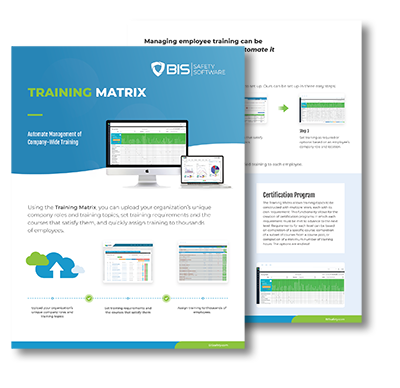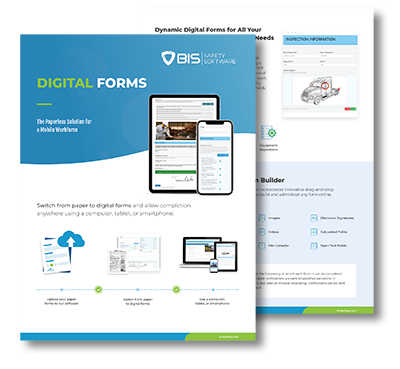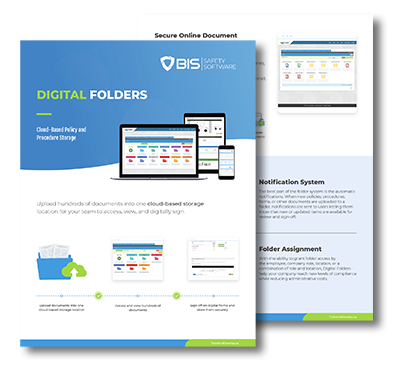
Identifying safety risks is a fundamental step in cultivating a safety-focused culture, the assessment of TRIF is vital for fostering a safer work environment. A low (good) TRIF is a obvious representation of great safety measures, a bad can raise insurance levels and get denied contracts and business.
Explore this Article:
Total Recordable Injury Frequency Formula
The Total Recordable Injury Frequency (TRIF) formula is a simple yet essential metric for measuring workplace safety. It is calculated using the following formula:
The Total Recordable Injury Frequency (TRIF) is calculated using a formula that standardizes the reporting of workplace injuries to compare safety performance across different environments and company sizes.
TRIF = (Number of injuries × 200,000) / Total hours worked<
- Number of injuries: Includes all recordable work-related injuries and illnesses.
- 200,000: Represents the hours worked by 100 full-time employees, assuming a 40-hour week over 50 weeks.
- Total hours worked: The cumulative number of hours worked by all employees during the period being measured.
Example of a TRIF Formula
Here’s an example: For a company with 150 employees recording three injuries last year, the TRIF calculation would be:
(3 x 200,000) / (300,000) = 2
For quarterly calculations, the 200,000 figure is simply adjusted to 50,000, which corresponds to the hours worked by 100 employees in a quarter.

Understanding Why We Track Total Recordable Injury Frequencys:
The primary aim of TRIF is to gauge the effectiveness of a company’s safety measures over the past year and to benchmark against peers in the industry. A high TRIF indicates a need for safety improvements, whereas a low TRIF suggests effective past safety measures. This tracking is particularly critical in high-risk sectors like construction and agriculture.
Advantages and Limitations:
Advantages and limitations of using Total Recordable Injury Frequency (TRIF) metrics can significantly influence how organizations perceive and manage their safety performance:
Advantages:
- Standardized Measurement: TRIF provides a consistent metric that allows businesses across different industries to measure and compare safety performance. This standardization is crucial for benchmarking and understanding relative performance levels.
- Simplicity of Calculation: The formula for TRIF is straightforward, requiring only the number of reported injuries and the total hours worked. This simplicity facilitates easier understanding and implementation within any organization.
- Performance Benchmarking: TRIF enables companies to benchmark their safety records against industry averages or sector-specific standards, which can guide strategic improvements and safety investments.
Limitations:
- Disproportionate Impact on Small Businesses: For smaller companies, a single incident can drastically alter the TRIF, potentially giving a skewed perception of their safety environment. This can lead to unfairly high TRIF scores that might not accurately reflect the company’s overall safety culture.
- Oversimplification of Data: TRIF calculations do not account for the severity or specific nature of injuries, treating minor incidents and major accidents equally. This lack of granularity can obscure deeper safety issues and prevent targeted interventions.
- Potential for Data Manipulation: Some companies might inflate the ‘hours worked’ figure by including low-risk or temporary workers to artificially lower their TRIF. This manipulation undermines the metric’s reliability and can lead to misinformed safety assessments.
- Does Not Predict Future Safety Performance: Relying solely on historical TRIF data can be misleading for predicting future safety outcomes. Past low TRIF scores might encourage complacency, detracting from proactive safety measures and vigilance.
Common Total Recordable Injury Frequencies Per Industry:
While monitoring your company’s Total Recordable Injury Frequency (TRIF) can be valuable for assessing workplace safety, it’s essential to understand its limitations. The TRIF offers a snapshot of the frequency of workplace injuries but may not fully capture the complexity of safety in various industries. Consider some statistics from 2020 regarding sectors in the US with the highest TRIFs:
- Health care/social assistance: 5.5
- Agriculture, forestry, fishing, and hunting: 4.6
- Transportation and warehousing: 4.0
- Retail trade: 3.1
- Construction: 2.5
These figures might raise questions, such as why the construction industry—typically considered highly hazardous—has a lower TRIF than sectors like retail trade or agriculture. The answer lies in the nature of the TRIF calculation. The TRIF metric counts incidents without weighting the severity or potential fatality of injuries. Therefore, industries where fatalities are more common, like construction, may not appear as risky if fatalities are fewer but more severe compared to numerous minor injuries in other sectors.
Moreover, using TRIF to forecast future safety performance can be misleading. A low TRIF is encouraging, suggesting effective safety measures, but it should not lead to complacency. Safety practices must continually evolve and adapt, regardless of past TRIF scores, to mitigate risks and protect workers effectively.

Considerations When Applying TRIF Calculations:
When implementing and interpreting Total Recordable Injury Frequency (TRIF) as a metric for workplace safety, it’s crucial to consider several factors to ensure its effectiveness and reliability. Here are some key considerations:
1. Industry Variability:
- Different industries have varying levels of risk and types of injuries, which TRIF might not fully capture. It’s important to contextualize TRIF scores with industry-specific data to understand the true safety landscape.
2. Severity of Injuries:
- TRIF counts all recordable injuries equally, regardless of their severity. Consider complementing TRIF with other metrics that account for the severity and potential long-term impact of injuries, such as Lost Time Injury Frequency (LTIF) or Severity Rate.
3. Size of the Workforce:
- The size and composition of the workforce can significantly affect TRIF scores. Smaller companies might see more fluctuation in their TRIF due to fewer hours worked and less frequent but significant incidents.
4. Historical Comparison and Trends:
- While TRIF provides a snapshot of safety performance, it’s also useful to track TRIF over time to identify trends, improvements, or deteriorations in safety performance.
- Avoid relying solely on TRIF for predicting future performance. Safety conditions can rapidly change, and past scores may not always be indicative of future risks.
5. Data Integrity:
- Ensure accurate and honest reporting of all incidents and hours worked. Manipulation of data to achieve better TRIF scores can lead to misinformed decisions and potentially unsafe working conditions.
6. Use in Safety Culture:
- TRIF should be one of several tools used to promote a culture of safety. It’s a starting point for discussions and improvements, not an end goal.
- Engage employees in safety training and awareness programs that encourage reporting and proactive management of safety risks.
7. Regulatory and Compliance Aspects:
- Be aware of how TRIF and other safety metrics are viewed by regulatory bodies in your industry. Compliance with industry standards and regulations should always be a priority.
Related Articles
- All Posts
- 360 Immersive
- 360immersive
- accident prevention
- Alberta safety courses
- Allan James Moore
- asking for help
- avoidable injuries
- awareness
- back strain
- BambooHR integration
- biometric sensors
- BIS Podcast
- BIS Safety Software
- black holes
- Brave Leadership
- burnout
- Canadian safety history
- carbon monoxide
- CCOHS
- chemical
- chemical vapors
- chronic injuries
- chronic pain
- Coming Soon
- community safety programs
- Compliance
- compliance courses
- compliance tools
- compliance vs protection
- Construction advocacy
- Construction education
- Construction industry
- construction safety training
- continuous safety improvement
- crane
- customized training
- daily trip inspection
- Danny Sellers
- data-driven safety
- digital forms
- Dr. Joanna Pagonis
- driver file management
- driver training
- early intervention
- EHS
- Einstein
- electrical safety
- emergency preparedness
- emergency response
- emergency supplies
- emotional training
- employee health
- employee safety
- employee training
- ergonomic risks
- ergonomics
- evidence collection
- exoskeletons
- fall protection
- field safety
- field safety services
- fire prevention
- first aid kit
- first week on the job
- first workplace injury
- fleet management
- frontline safety
- gravitational waves
- hand injuries
- hands-on training
- hazard communication
- hazard prevention
- hazard recognition
- Health & Safety Podcast
- hearing loss prevention
- heavy equipment safety
- hidden workplace hazards
- high voltage systems
- HR automation
- HR software
- human-centered safety
- humor in safety
- immersive learning
- Imposter Syndrome
- incident data
- incident investigation
- incident reporting
- industrial safety
- injury consequences
- injury prevention
- injury prevention tips
- injury recovery
- injury reporting
- injury response
- injury response plan
- internal audits
- invisible dangers
- Jennifer Lastra
- job site hazards
- job site risks
- job site safety
- Jody Young
- KBR Safety Training
- labor movement
- ladder safety
- Leadership
- leadership accountability
- leadership and empathy
- learning from incidents
- lifting techniques
- LIGO
- LMS
- lockout tagout
- lone workers
- mental health at work
- MI Safety
- minor injuries
- new workers
- no-blame investigations
- noise exposure
- Northern BC
- NRCA
- NSC Standard 13
- occupational fatigue
- occupational hazards
- occupational health
- occupational safety
- OHSA
- oil and gas safety
- onboarding safety
- Online safety training
- organizational safety
- OSHA compliance
- OSHA standards
- overhead crane courses
- pain awareness
- personal protective equipment
- physics careers
- pipeline safety
- podcast
- post-accident review
- post-incident protocol
- PPE
- PPE enforcement
- PPE improvement
- pre-trip inspection
- pretrip inspection
- proactive safety measures.
- Professional development
- psychological hazards
- psychological safety
- repetitive motion injuries
- respirator safety
- risk management
- risk reduction
- road safety
- Robin Postnikoff
- root cause analysis
- routine task risks
- safe work habits
- safety
- safety accountability
- safety advice
- safety article
- safety awareness
- safety best practices
- safety communication
- safety compliance
- Safety Conversations
- safety culture
- safety engagement
- safety follow-up
- safety gear
- safety habits
- safety innovation
- safety insights
- safety inspection
- Safety Leaders
- safety leadership
- safety legislation
- safety lessons
- safety management
- safety management system
- safety metrics
- safety motivation.
- safety myths
- safety podcast
- safety procedure updates
- safety review process
- safety shortcuts
- Safety Spotlight
- safety systems
- safety technology
- safety theater
- safety tips
- safety training
- safety transparency
- silent dangers
- silica dust
- Sinogap Solutions
- slow-building hazards
- smart helmets
- space science
- supervisor training
- team communication
- teamwork
- Total Recordable Injury Formula
- tough guy mentality
- toxic air
- training
- training courses
- training matrix
- training record management
- transportation
- Trust and Accountability
- unseen workplace threats
- vehicle safety
- veteran advice
- Virtual Reality
- VR safety training
- VR Technology
- wearable technology
- WHMIS
- witness statements
- women in leadership
- work-alone training
- work-related injuries
- worker accountability
- worker advocacy
- worker fatigue
- worker protection
- worker safety
- worker safety habits
- worker trust
- workers' rights
- workforce management
- workforce training
- workplace accidents
- workplace air quality
- workplace best practices
- workplace certification
- Workplace Culture
- workplace hazards
- workplace health
- workplace incident response
- workplace injuries
- workplace injury prevention
- workplace mindset
- workplace risk factors
- workplace risk management
- Workplace safety
- workplace safety culture
- workplace safety rules
- workplace safety tips
- workplace safety training
- workplace stress
- workplace tiredness
- workplace wellness
- WSPS

Too many workers risk injury by refusing help to appear tough. This article explains how asking for help and supporting...

Canada’s safety standards weren’t handed down—they were hard-won. This article explores the rise of workplace safety from the early industrial...

Workplace safety cultures fall into three categories: the good, the bad, and the ugly. Some organizations set the gold standard...


























